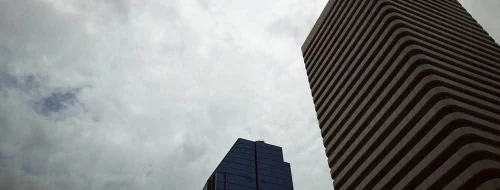Mold can grow in any type of building – commercial or residential – and it can occur both indoors and outdoors in all types of weather conditions. While there isn’t an exact number of how many species of mold actually exist, the Center for Disease Control and Prevention estimates that there are over 300,000 types of mold and fungi. According to the CDC, there is a little bit of mold everywhere, but in large quantities, mold should not be ignored or overlooked.
Problems Caused by Mold
Even in a commercial setting, long exposure to mold can cause people to have health-related issues. People most affected by mold tend to be susceptible to allergies or already suffer from weakened immune systems. These pre-existing conditions are often triggered by mold spores and people can suffer from additional symptoms like:
- Congestion
- Skin irritation or rashes
- Watery or itchy eyes
- Difficulty breathing or wheezing
If the commercial building is used for work, school, or living quarters, exposure to black mold can lead to severe reactions like respiratory infections, chest inflammation, or lung problems. In addition to respiratory issues, some molds are even toxic to humans that don’t have pre-existing problems.
Where is Mold Hiding in the Building?
When you own a commercial building, understanding where mold can hide is important. It is your responsibility to maintain the building and identify the possibility for mold growth before it happens -tenant health can depend on it.
Moisture control is the number one factor in mold prevention. The Environmental Protection Agency recommends the following tips to prevent mold:
- Monitor the plumbing in your building. This includes toilets, sinks, and appliances. If you notice a leak, repair it immediately.
- Walkthrough the building on a regular basis and look closely for signs of water and wet spots.
- If you notice condensation, you may need to insulate the building or increase air circulation. This can also be a sign of high humidity, which means the need for a dehumidifier or added ventilation.
- Check all drip pans and make sure they’re free of dirt and debris.
- HVAC systems must be checked regularly and scheduled for maintenance as needed.
How to Handle Mold Problems
If you notice a mold problem in your building, it’s necessary to call in a professional remediation team like McMahon Services to clear away the problem. Here’s what to do in case of a mold sighting:
- Never touch the mold with your bare hands. As you investigate the areas, always wear a respirator to protect your lungs. This will keep you from breathing in the mold spores.
- Make a list of any mold-damaged materials in the building.
- Your HVAC system should be turned off – this will help prevent the further spread of mold spores into other areas of the building.
- Call in a professional mold removal specialist. They will walk through a mold remediation plan including:
- Discovering where the leak is coming from and how to repair it – handling the source of the mold.
- Informing the building tenants about the issue and what is being done to fix the problem and if there are any necessary steps they need to take.
- Clean the mold, dry up wet areas, and repair/replace any materials that were damaged due to mold.
McMahon Services offers commercial mold remediation services and has 20+ years of experience. We provide free consultations for mold damage and cover areas around Chicago, Grayslake, Oak Park, and surrounding Northern Illinois areas. Call us today and let us handle your mold problem before it gets worse.

